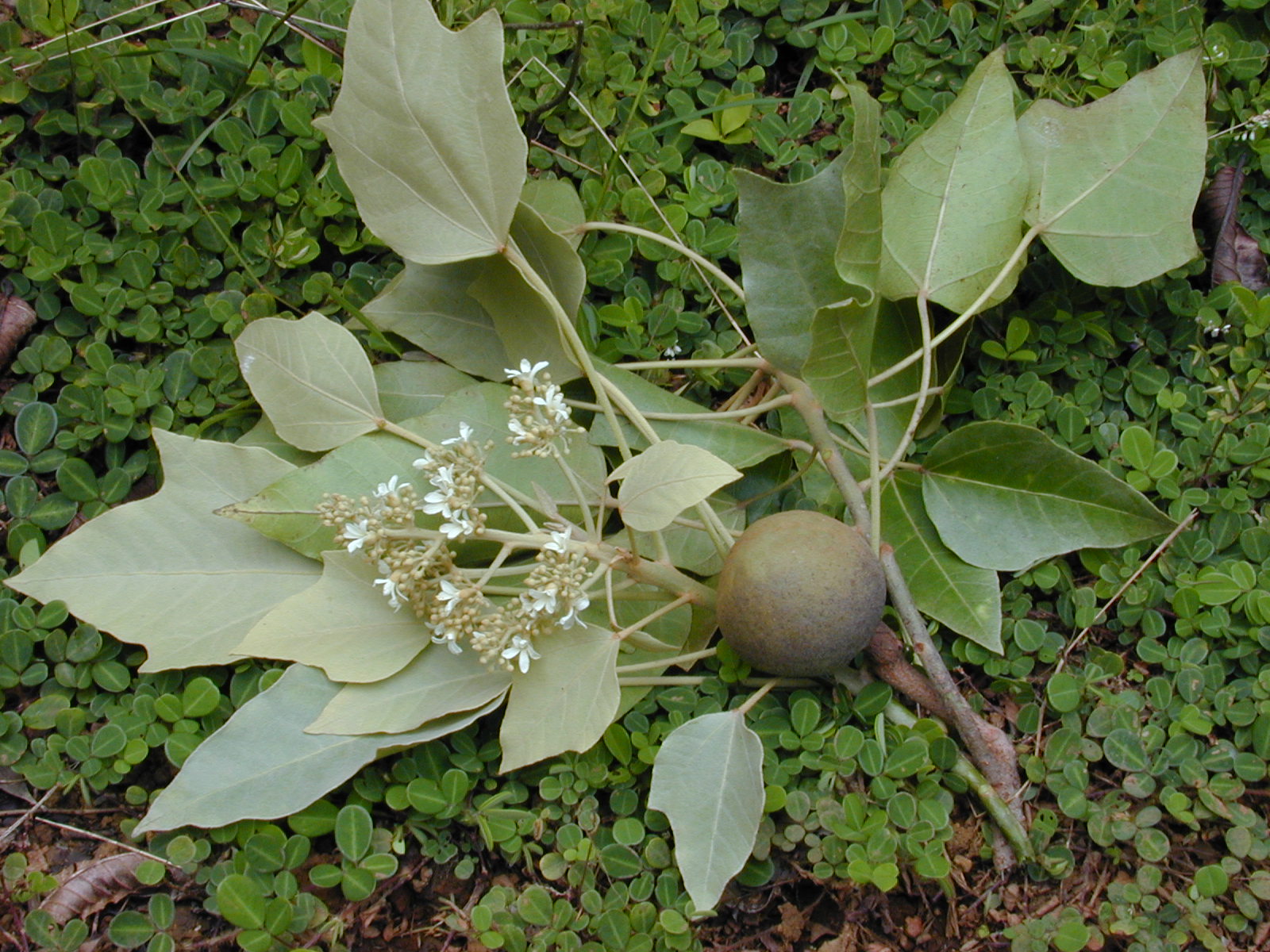- Euphorbiaceae
Taxobox
name = Spurge family

image_width = 250px
image_caption =Candlenut tree (Aleurites moluccana)
regnum =Plant ae
divisio = Magnoliophyta
classis =Magnoliopsida
ordo =Malpighiales
familia = Euphorbiaceae
familia_authority = Juss.
subdivision_ranks = Subfamilies
subdivision =
*Acalyphoideae
*Crotonoideae
*Euphorbioideae For a detailed taxonomy to the genus level, seeTaxonomy of the Euphorbiaceae .The
Spurge family (Euphorbiaceae) is a large family offlowering plant s with 300 genera and around 7,500 species. Most areherb s, but some, especially in thetropics , are alsoshrub s ortree s. Some aresucculent and resemble cacti.This family occurs mainly in the tropics, with the majority of the species in the Indo-Malayan region and tropical America a good second. There is a large variety in tropical Africa, but it is not as abundant or varied as in these two other tropical regions. However, "Euphorbia" also has many
species in non-tropical areas such as theMediterranean region , theMiddle East ,South Africa and southernUSA .The leaves are alternate, seldom opposite, with
stipule s. They are mainly simple, but where compound, are always palmate, never pinnate. Stipules may be reduced to hairs, glands, or spines, or in succulent species are sometimes absent.The radially symmetrical
flower s are unisexual, with the male and the female flowers usually occurring on the same plant. As can be expected from such a large family, there is a wide variety in the structure of the flowers. They can be monoecious or dioecious. Thestamen s (the male organs) can number from 1 to 10 (or even more). The female flowers are hypogynous, that is, with a superior ovary.The genera in tribe
Euphorbieae , subtribeEuphorbiinae ("Euphorbia " and close relatives) show a highly specialized form ofpseudanthium ("false flower" made up of several true flowers) called acyathium . This is usually a small cup-likeinvolucre consisting of fused together bracts and peripheral nectary glands, surrounding a ring of male flowers, each a singlestamen . In the middle of the cyathium stands a female flower: a single pistil with branched stigmas. This whole arrangement resembles a single flower.The
fruit is usually aschizocarp , sometimes adrupe . A typical schizocarp is the regma, a capsular fruit with three or more cells, each of which splits open at maturity into separate parts and then breaks away explosively, scattering the small seeds.The family contains a large variety of
phytotoxin s (toxic substances produced by plants), mainly diterpeneester s,alkaloid s,glycoside s, andricin -type toxins.A milky sap or
latex is a characteristic of the subfamilies Euphorbioideae and Crotonoideae. This milky sap ispoison ous in the Euphorbioideae, innocuous in the Crotonoideae. White mangrove ("Excoecaria agallocha"), or Blind-Your-Eye Mangrove sap causes blistering on contact and temporary blindness if it contacts the eyes. Other common names are Milky Mangrove, Buta Buta (Malay), Gewa (Bangladesh). The sap ofspurge was used as apurgative .Recent molecular studies have shown that the enigmatic family
Rafflesiaceae , which was only recently recognized to belong to orderMalpighiales , is derived from within Euphorbiaceae (Davis et al. 2007).Uses
A number of plants of the Spurge family are of considerable economic importance. Prominent plants include
Manioc , theCastor bean , and thePara rubber tree .Many are grown asornamental plant s, such asPoinsettia ("Euphorbia pulcherrima").Leafy spurge ("Euphorbia esula") is an invasive weed in North America.References
* Charles C. Davis, Maribeth Latvis, Daniel L. Nickrent, Kenneth J. Wurdack, David A. Baum. 2007. Floral gigantism in Rafflesiaceae. Science Express, published online January 11, 2007 (online abstract [http://www.sciencemag.org/cgi/content/abstract/1135260 here] ).
*International Euphorbia Society
* [http://www.ars-grin.gov/~sbmljw/cgi-bin/family.pl?433 Data from GRIN Taxonomy]
* [http://delta-intkey.com/angio/www/Euphorbi.htm Euphorbiaceae] in [http://delta-intkey.com/angio/ L. Watson and M.J. Dallwitz (1992 onwards). The families of flowering plants: descriptions, illustrations, identification, information retrieval.] http://delta-intkey.com
Wikimedia Foundation. 2010.
